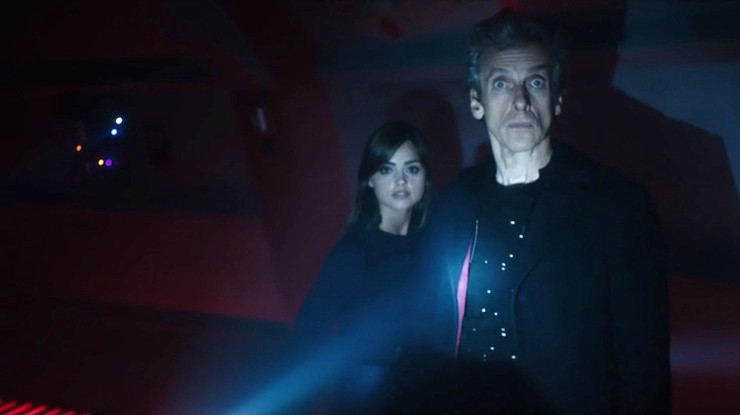This week’s episode—the season’s first standalone, written by Mark Gatiss—was all about the found footage! It’s time to take a five-minute nap and visit the Sandmen…
Summary
The episode is a repository of found footage pieced together by man named Gagan Rassmussen, who is head researcher on Le Verrier Space Station. The station is orbiting Neptune in the 38th century, and a rescue team has been dispatched to find out what happened to its crew after the station fell out of communication. They are comprised of four soldiers: Nagata, Deep-Ando, Chopra, and a grown clone “grunt” called 474. The group don’t find any of the crew, but they do stumble across the Doctor and Clara (who the psychic paper pegs as engine inspectors). They all encounter strange sand creatures, and are forced to run; Deep-Ando gets separated from the group. The rest end up in a bay full of Morpheus sleep pods, one of which Clara gets sucked into. The Doctor pulls her out, and they awaken the only person on the station, hiding in another pod: It’s Rassmussen, the inventor of the Morpheus system. He shows everyone what the pods are for—they compress a month of sleep into a five minute nap, allowing humans the ability to work continuously.
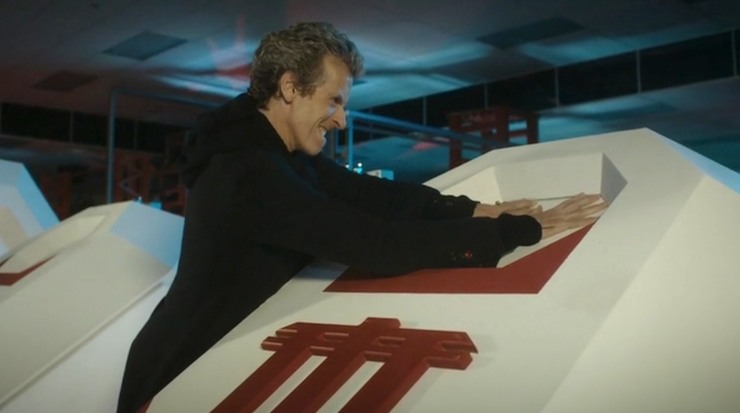
The Doctor is less than pleased with this idea, and postulates that the monster they encountered is made up of the sleep dust that collects in the corner of people’s eyes. They already consumed the crew, and now they’re after new prey. It seems that the song “Mr. Sandman” draws them to people (it’s the same song that the pods play), and the station computer requests that Deep-Ando sing the song to open a door. He is shortly killed afterward. The station’s gravity shields fail, dragging the station toward Neptune. In the ensuing panic, Rassmussen is killed by the Sandmen—Clara’s name for the monsters. The Doctor fixes the gravity shield and he, Nagata, and Clara hide in the freezer while Chopra and 474 head back to ship, assuming everyone else is dead. 474 gives up his life, saving Chopra from a fire created as a result of the gravity shield problem, but Chopra gets killed by the Sandmen anyway. While in the freezer, the Doctor discovers that the Sandmen are blind, and he uses that to their advantage in escaping the cold room.
Eventually, the Doctor picks up the sonic sunglasses and discovers that a bunch of video is being constantly transmitted, presenting their current dilemma from the perspectives of everyone onboard the station. He assumes that there are cameras in the soldier’s helmet, until Nagata tells him that they don’t have any. It’s then that the Doctor realizes that the video is being taken from the POV of everyone who has been inside the Morpheus pods, Clara included (Chopra doesn’t have a feed because he refused to use them). This tie results in the pod users being infected and then consumed. He assures Clara and Nagata that he can reverse the problem on the TARDIS.
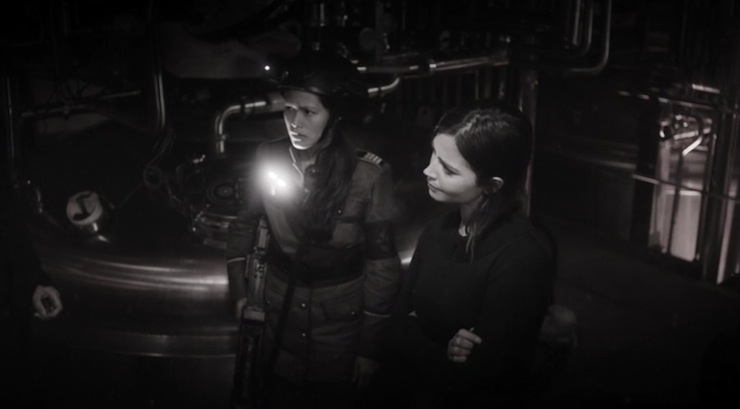
When the three of them arrive back at the rescue ship, they find Rassmussen, who turns out to be very alive. The man is trying to use the ship to transport the very first Morpheus pod, carrying what he calls patient zero of this whole problem. He caused the gravity shield failure so he could transport the pod to the ship without being discovered. Believing that the Sandmen are superior beings, he wants them to make it to Triton and infect the solar system. Rassmussen tries to get the trio infected by patient zero, but the Doctor helps them escape while Nagata shoot Rassmussen dead. Once they make it to the TARDIS, the Doctor decides that all of that seemed far too easy and rehearsed. Sure enough, the Sandmen surround them—so the Doctor turns off the gravity shields again and the station takes a dive into Neptune.
At the end of the episode, we get some narration from Rassmussen who reveals that he, too, is a Sandman, and that the footage we’ve been watching was created to keep you fixated, transmitting their message into your mind. You are now becoming a Sandman as well….
Commentary
This is one of the only non-serial episodes of this season, an interesting break after four consecutive two-parters. Even so, this episode falls down on delivering the shivers it promises, which makes its uniqueness less exciting than it should be. Mark Gatiss has never done a Who episode set in the future, but this is unfortunately a pretty solid miss for him.
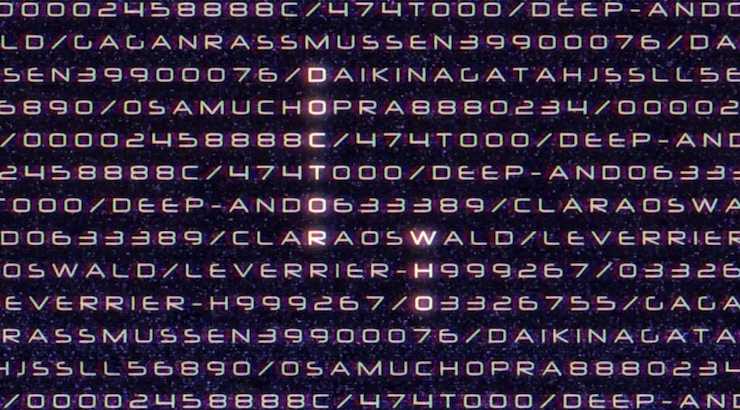
It was cool that the episode forewent the standard opener for a screen full of creepy code. Not something that Who does generally (the opener usually only changes with a new Doctor), so it really sets this episode apart in terms of tone. Additionally, it’s been ages since we’ve had an episode centered on found footage, so the change up was a welcome one. Problem is, found footage episodes that focus on new characters must take time to introduce and set up those fresh faces. It would have been nice to spend some time with the rescue crew, but the Doctor and Clara burst in before you know it, and then it’s off to the races.
The story contains ideas that are topical and fascinating: In a world where so many people are expected to work endless hours with little compensation—all in the name of proving how much they care about their jobs—creating an economy built on the backs of workers who never sleep is a highly relevant point on which to turn the plot. The importance of quality snooze time is touched upon as well, which feels extra relevant as study after study keeps emerging about how no one is getting enough sleep, or particularly good sleep, either. It’s too bad that the episode doesn’t engage more with these ideas; the damage caused by a true sleep deficit is horror all by itself, and applying that to this narrative would have worked beautifully.
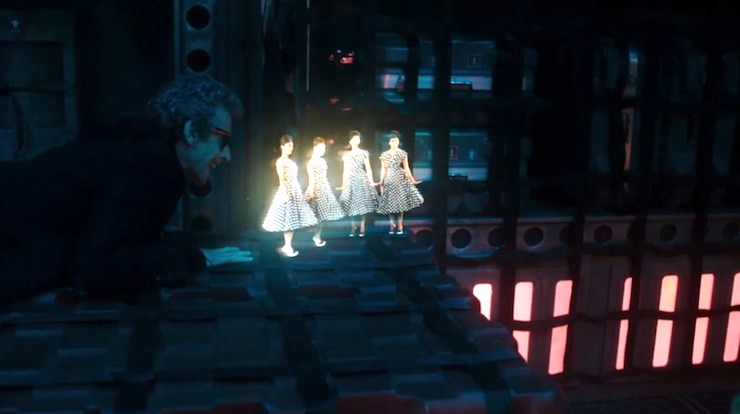
As I mentioned before, the guest stars in this episode unfortunately don’t get enough characterization or development to be interesting, and it’s too bad because all of the actors are great. It’s particularly distressing that the narrative goes through all the trouble of setting up these “grunts” (the clones) and then barely addresses their creation, use, or fates. It took the Tenth Doctor two whole seasons to eventually go back and help out the Ood, but even then, the Ood were better developed as a species on their very first outing. I suppose we can hope to see the grunts in later episodes, but for now it was simply an atmospheric choice that did nothing for the story.
There’s way too much serendipity in this plot; the Doctor just happens to put on his sonic sunglasses and discover the video feed… because. The Doctor decides that the Sandmen are created because you don’t wipe the sleep from your eyes… and then he never elaborates on how that works. People get separated because they just… run in opposite directions. The dust in people’s eyes are video feeds now? The Sandmen are blind because they needed something to slow them down?
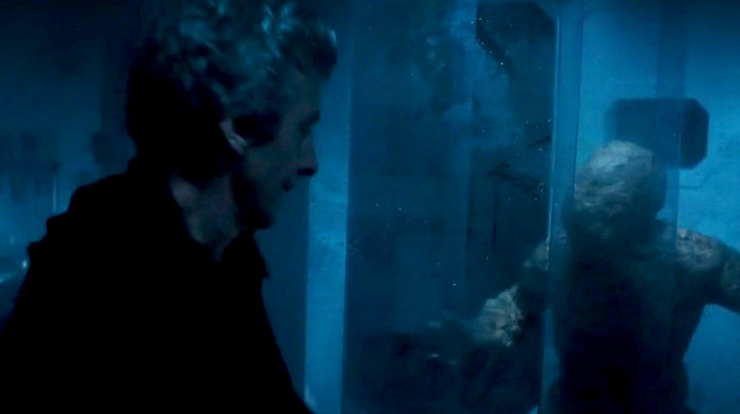
Speaking of the Sandmen, they’re fun in theory, but they just aren’t scary enough to carry the entire episode. The explanation that they are created by the sleep in our eyes could have been a fun one—it’s a bit silly, but it feels very Classic Who—yet we get next to know guidance on how that jump occurs. It doesn’t help that their rules are foggy and strain their mobility entirely. The Doctor’s insistence that he can fix Clara and Nagata following their exposure seems hollow because there is very little reason given on why he should be able to do that. (And if this exposure to the Sandmen becomes something that eventually does put Clara in peril down the road, that needed to be made much more clear.) Because they end up such a vague villain, the meta ending of the episode doesn’t come off at all. Rather than being frightened, we’re merely left with a justification for the “found footage” aspect, and it’s not a very sharp one. It seems as though the tale would have been more chilling in short story format, or perhaps as a radio play.
Putting another idea in the ring, this episode could have been a fantastic choice for a Doctor Lite episode. While we obviously can’t get enough of Twelve, there’s no real reason the Doctor needs to be involved in this particular adventure. It would have been much more fun to have him and Clara swoop in at the end and fix things up, and then the meta final scene would have been much scarier. Plus, we would have had the opportunity to enjoy time with the rescue crew, and then feel sad when each one of them got picked off.
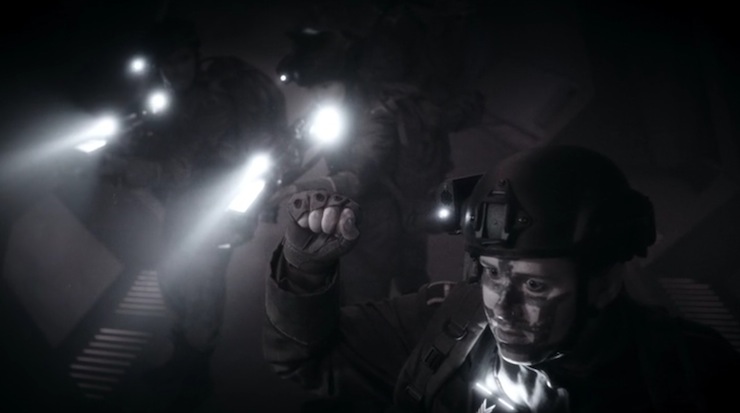
There is more than one similarity between this tale and previous points in other Who episodes. The idea that the Sandmen video is “transmitting” their message to people watching the feed is similar to the Fisher King’s plot in the “Under the Lake” two-parter. Then there’s the idea that watching the Sandmen causes you to become one, very similar to the Weeping Angels. Also, the station’s computer system tells Deep-Ando to sing a song to unlock a door—a decision made by the crew when they were drunk, according to the computer. This is the same gamut created by the crew in the episode “42,” but it was used to heighten tension in there. If all this ends up being intentional, that could be interesting… but it seems more likely that the connections are accidental.
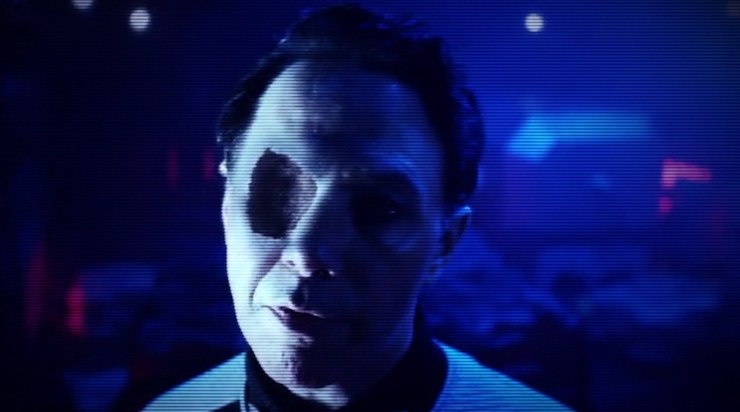
All in all, one of the weaker offers of the season. While the premise showed promise, there simply wasn’t enough oomph behind to make the Sandmen the stuff of nightmares.
Emmet Asher-Perrin did spend the rest of the evening singing “Mr. Sandman,” though. So there’s that. You can bug her on Twitter and Tumblr, and read more of her work here and elsewhere.










